Chasing spiders and bees
This week: Chasing spiders and bees; A walk on the wild side; Just a little open heart surgery; Cats and snakes;
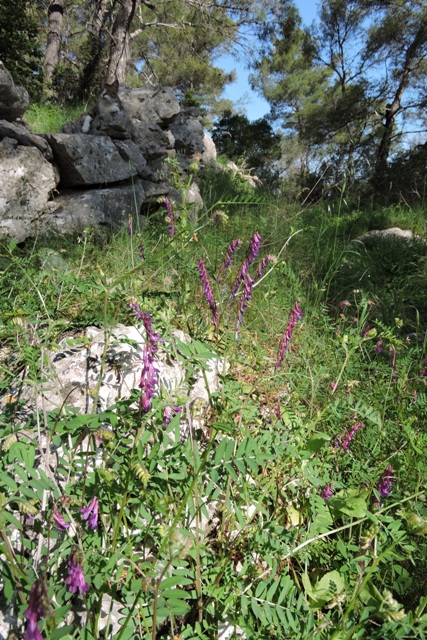
It is finished! I’m talking about my floor tiling of the Konoba.
OK, let me clarify that bold statement, it is finished except for grouting between the tiles.
After more than two days of cutting curves into tiles, I laid the final corner piece this week and breathed a sigh of relief. I have never tiled such a big room before and it has not been easy.

When I put the laser onto the tiles, after 27 rows, I am about 1 centimetre out between the two opposite ends of the room. OK, that’s not perfect, but if I hadn’t told you, you would never have known.
I am guessing here, because I am not going to measure them, but from the left overs, I think I have a tile wastage of between 1% and 2%, in 250 tiles.
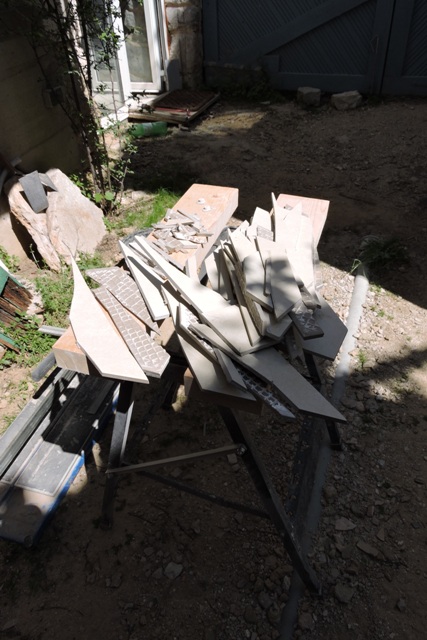
Given that it is recommended that you allow 15% for wastage when tiles are laid diagonally, I am happy.
Summer is here, with temperatures over 26ºC this week. I expect them to fall back a little from Wednesday next, but it means the insect world has woken up.
I heard a commotion in the courtyard outside my Konoba this week and when I looked out there were two Swallowtail butterflies, Papilio machaon, having a fight.
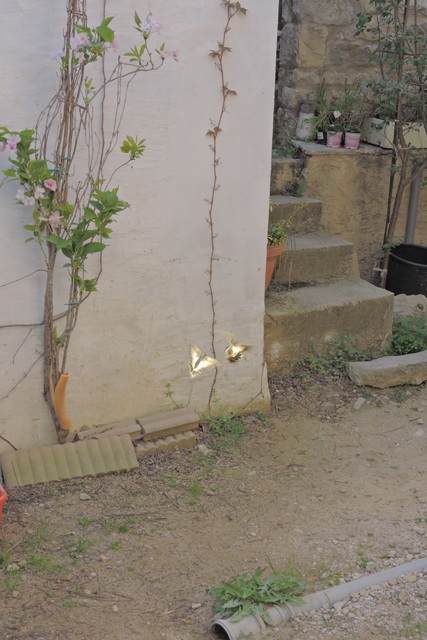
The males of the species are territorial, but I hadn’t realised that they beat each others wings, sufficiently to make a noise. After a few seconds of combat, one flew off.
Here they are in close up, with the one on the right on its back. However the light wasn’t enough to allow my camera to freeze-frame their movement.
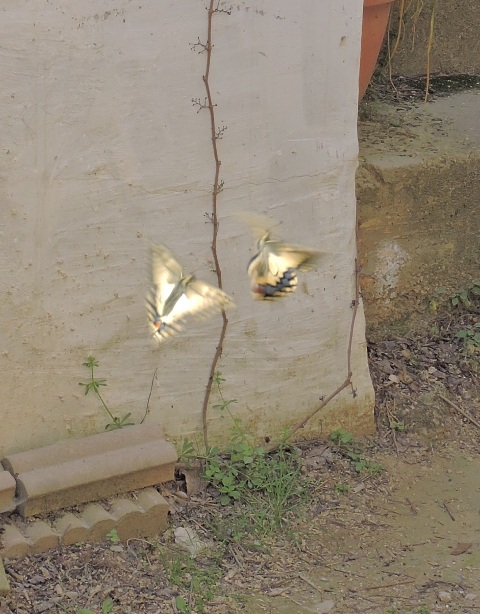
I spotted this tiny Katydid nymph which had recently hatched, sunning its self on a wall. It was less than 10 mm in total length.
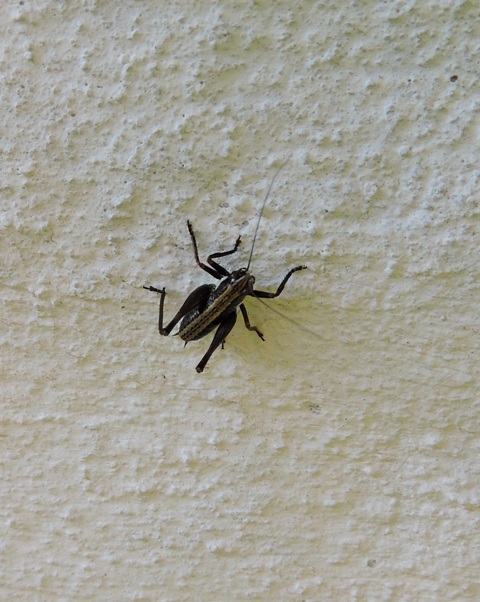
All in all, it has been a busy week again…
Chasing spiders and bees
I was checking on plants and trees in my orchards this week, when I saw that the only orchids I know of which are growing within my curtilage, were in flower.
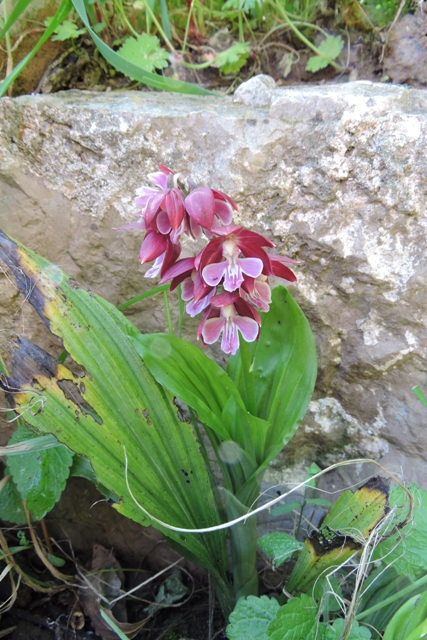
These are Cananthe, sometimes called the Christmas Orchids, albeit they are spring flowering here in Dol.
This set me thinking that I should walk the lanes where I have seen orchids in the past. I have to say I am very pleased I did.
Four weeks of work inside the Konoba has not left time for anything else!
On my first excursion with Tigger and Bljsac, we found shoots of the Violet Birds Nest Orchid growing beside the path.
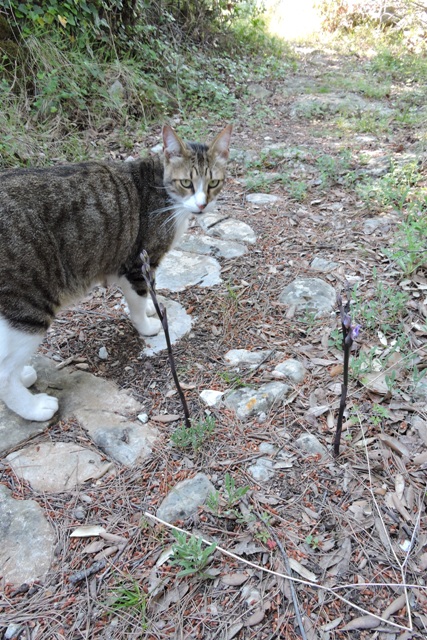
There were just four stems, in one place on one path.
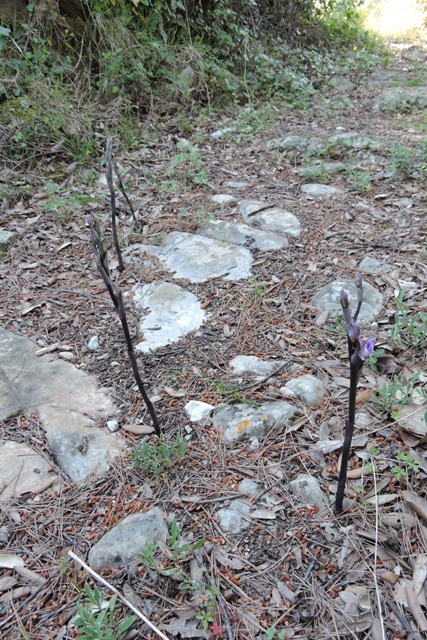
This species is unusual because it spends six to eight years underground, in a very specific Kharst habitat, before sending up a single flower shoot, flowering, setting seed and then dying.
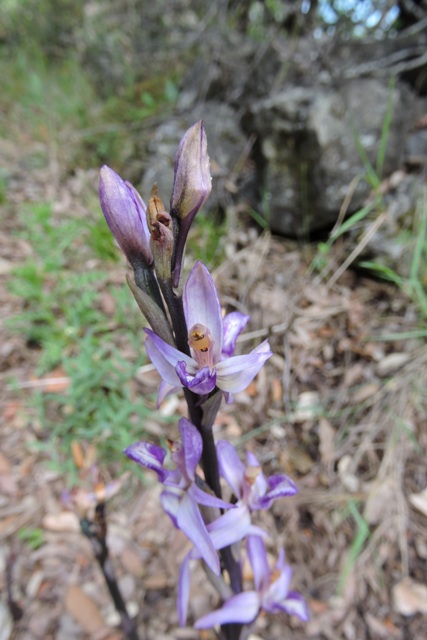
This photograph is from two years ago. There were no flowers last year. With just four stem, I worry that being so close to a footpath they may not survive this year.
In another spot there were several tiny orchids between the stones of the path, standing no more than 6 cm tall.
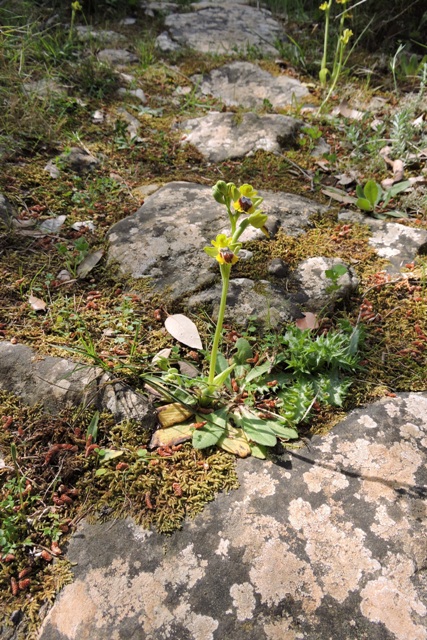
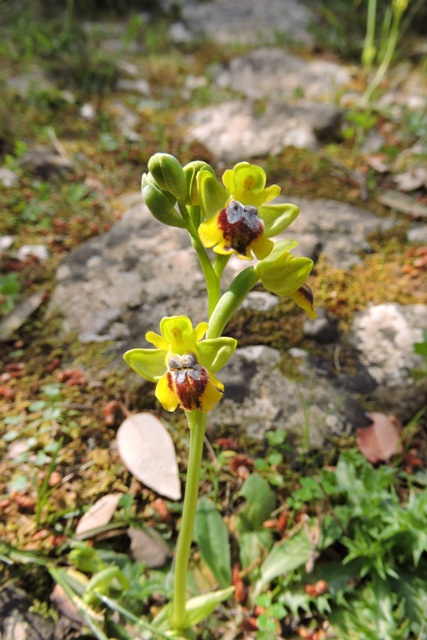
I am fairly certain that it is one of the Ophrys genus, a Bee Orchid. But which one? I have not been able to identify it.
This orchid is easier to identify because of the colours and marking.
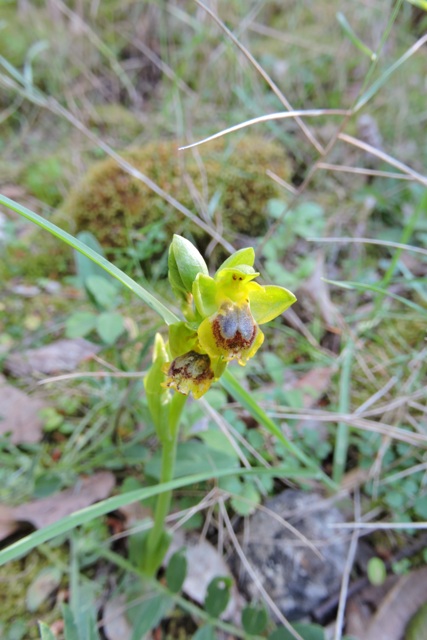
I am not an Orchidologist or Botanist and I struggle to identify many of the plants and flowers I see. This one I found in one of my books and is Ophrys lutea, the Yellow Ophrys.
Whilst walking in one area, I was searching for orchids and saw none. But coming back, with the sunlight behind me, two were visible.
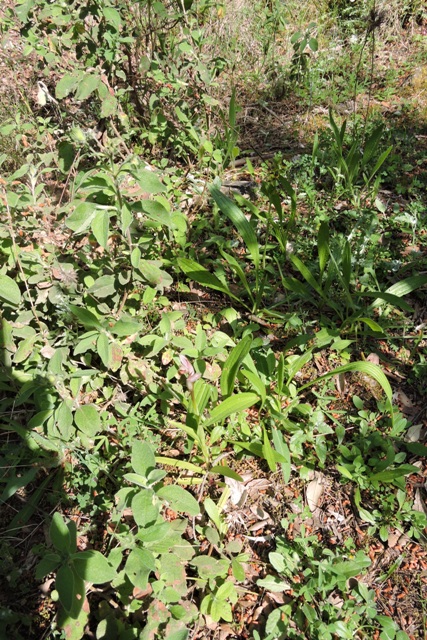
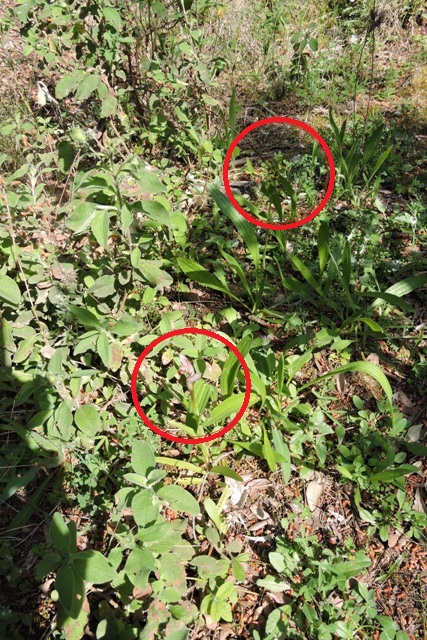
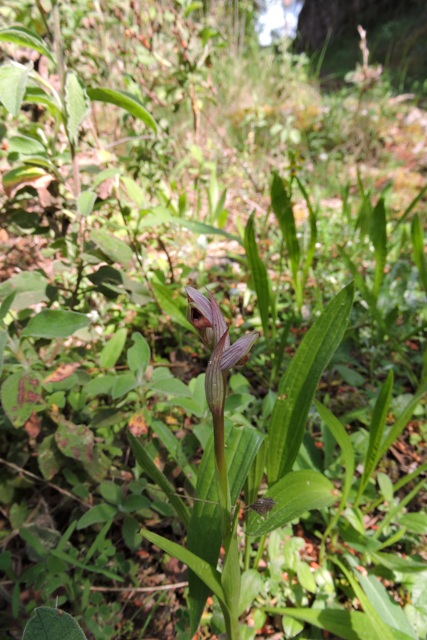
Many orchids simply hide in plain sight, which probably ensures their survival. If people could catch rainbows and put them in jars, some people would!
Along one path, in the space of 60 metres, there were several hundred of these.
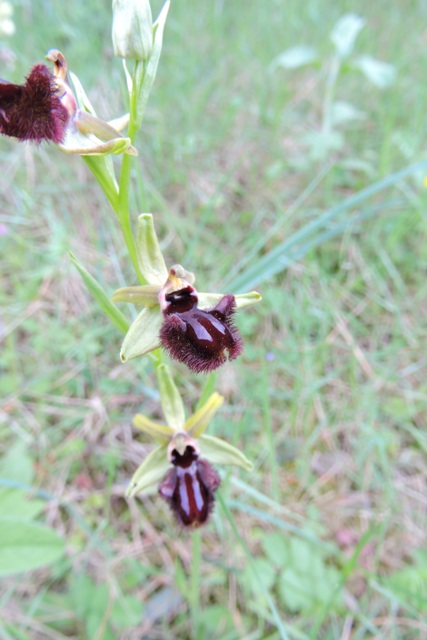
I have never noticed them before, or seen so many in one place of any kind of orchid here. I think they are Ophrys herae.
But when I looked the species up, books suggest they are usually found to the East of the Adriatic. So now I don’t know!
I could identify these as Eastern Yellow Ophrys.
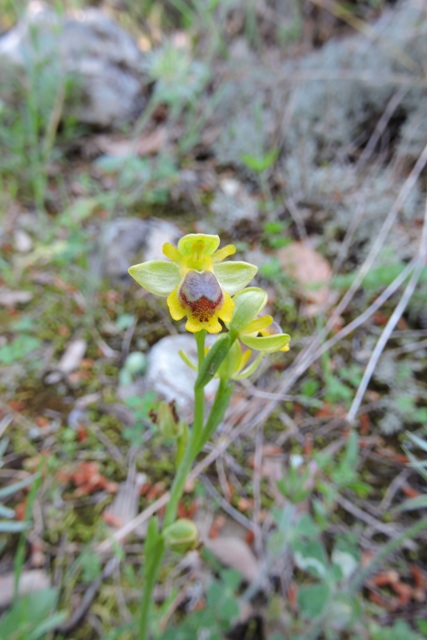
But what about these?

As well as the bee orchids, I have also found some spider orchids this week.
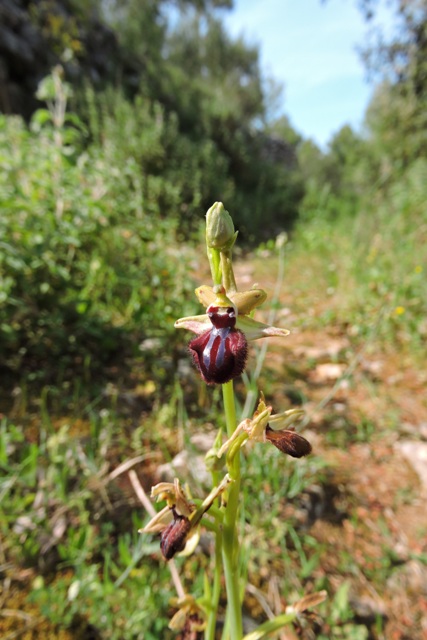
Spider orchids are also in the Ophrys genus. The Early Spider orchid is Ophrys sphegodes.
Just for good measure, here are a few more I am still working to identify.
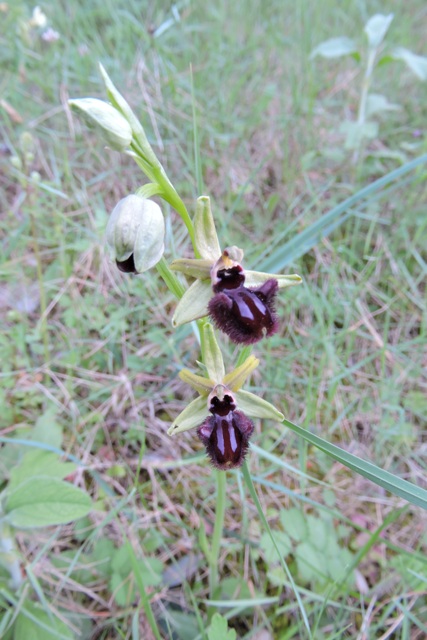
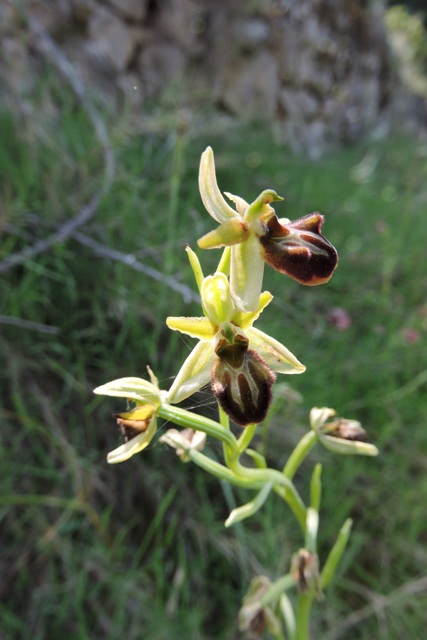
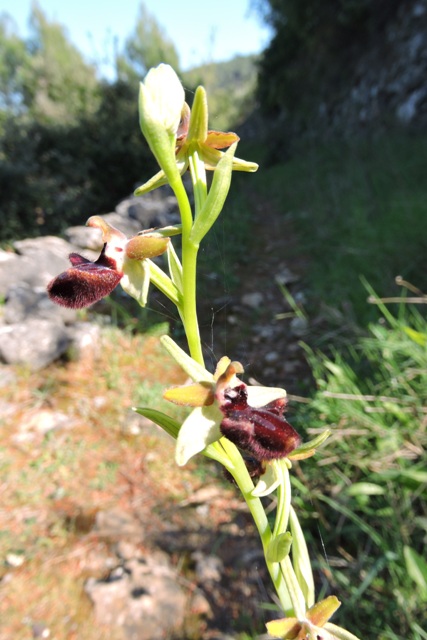
Some look very similar to others, until you;
a) see them in different places
b) look at them under magnification and see they are actually subtly different.
In my time here, I have never seen so many different orchid species, or orchids of the same species, in flower all at the same time.
Is this another result of climate breakdown?
A walk on the wild side
I have worked from 7.30 or 8am most days this week, with few breaks, but finishing by 15:30.
This has allowed me to walk the paths and green lanes around my home, while the sun was still high in the sky but after the head had subsided.
Usually one or more of the felines has followed me. Did you spot Tigger in the headline photograph?
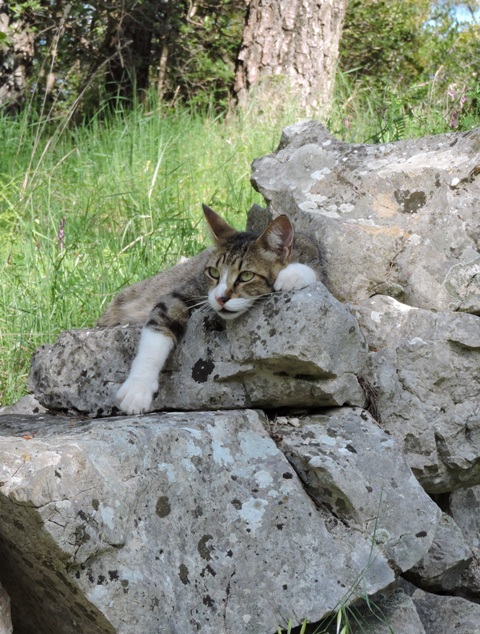
With long grass, the felines prefer to use the dry stone walls most of the time. Being a “Tabby”, even with four white socks, his markings blend perfectly into the landscape.
Without doubt, spring is my favourite time of year. After our wet winter, everything is green and lush.
There are wild flowers everywhere. The diminutive Star of Bethlehem, Ornithogalum umbellatum, is easily missed in amongst the mosses and lichens.
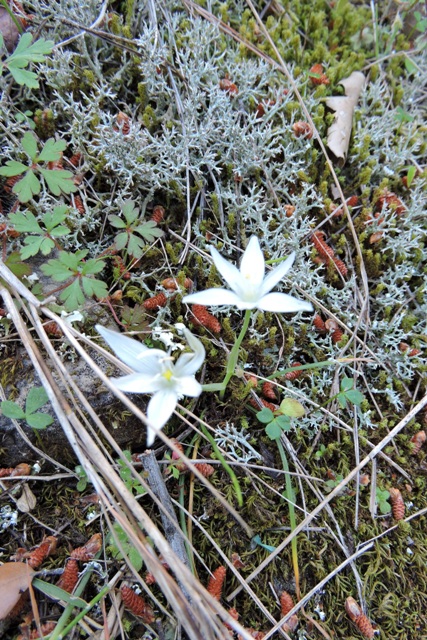
Everywhere this week the Pink Kidney Vetch, Anthyllis vulneraria subsp. praepropera, is in flower. In old English “Vetch” means medicinal and the Latin “vulnerari” means ‘wound healer’.

Another common wild flower at the moment, in my orchards and on local paths, is the Tassel Hyacinth, Muscari comosum.
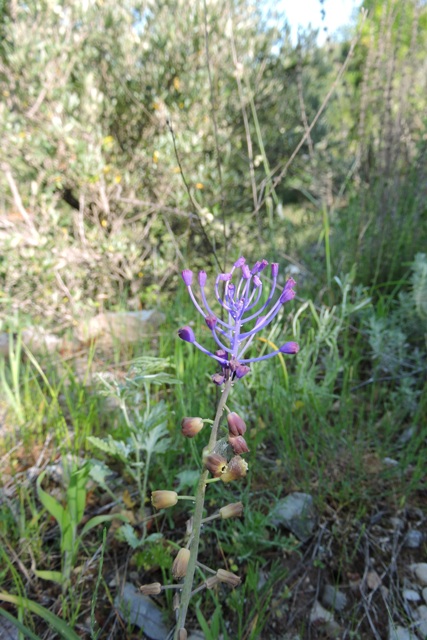
There are many common wild flowers, but some more unusual ones, like the Wild Salsify, Tragopogon porrifolius, stand out at the moment.
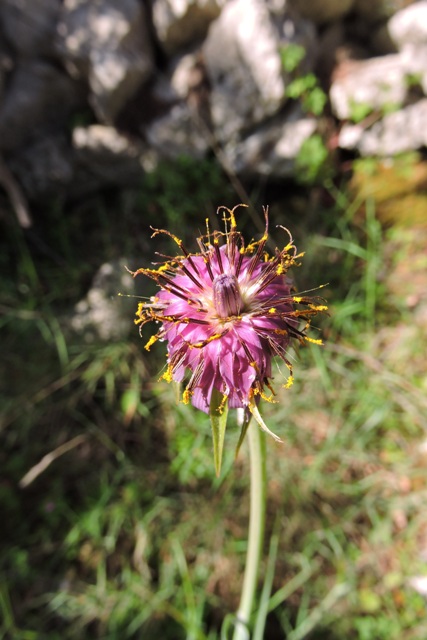
This is really the best time for visitors to come and enjoy our island’s natural jewels.
Just a little “Open heart” surgery
There are 27 diagonal rows of tiles in the Konoba. I took time at the start to try and make sure they are at an angle of 45º to the long walls.
However that is difficult because the room is a trapezoid, with no square corners and it is more than half a metre wider at one end than the other.
I found that I could get 11 full tiles in each row, but depending on the wall at each end of the row, there would have to be some cutting to make the tiles fit around the protruding stones.

Only three tiles on the end of rows have been fitted without cutting, so 51 have needed some minor or major adjustments.
All the cutting has been done using a 22 cm diamond tipped cutting disc in an angle grinder tool.
You can imagine that on Tuesday afternoon, after a day and a half of doing nothing but cut tiles, I was less than impressed when the switch on the electric angle grinder stopped working.
It was too late to seek solace in a coffee, so I started to disassemble the machine to get at the switch.
I have already broken the switch on my Black & Decker angle grinder, cause by the fine dust from cutting getting into the working parts. I now need to try and find and order a spare for it.
Fortunately I had an “El Cheapo” Carrefour angle grinder and this is what had stopped.
In warm sunshine I started the “open heart surgery” on the machine, after unplugging it of course. I only needed three screwdrivers, some bottle nose plyers and no special tools.
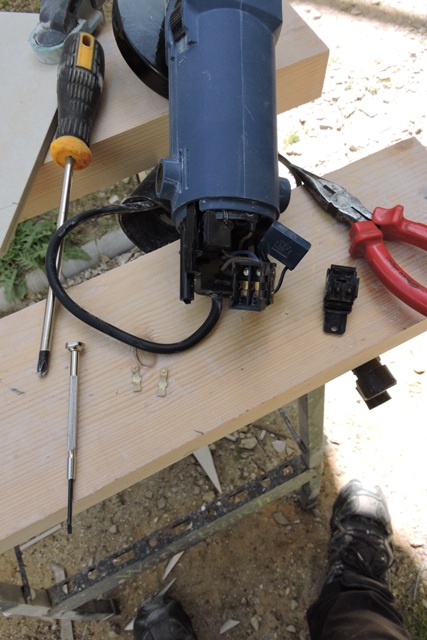
Everything was disassembled easily – unlike the Black & Decker, the switch wasn’t a sealed unit – and I could get at the brass contacts deep inside the switch.
There was a fine layer of white tile powder everywhere, which with a little compressed air, I cleared.
The plastic slider switch was also not moving freely, even after cleaning. However I decided not to use silicone grease because this would just attract more dust and bung up the switch even more.
With everything cleaned and rebuilt, the angle grinder came back to life.
With another 15 or so tiles to cut, I decided to use a switch between the wall socket and the machine to power it on and off, rather than the switch on the device.
This way I could leave it permanently switched on at the machine, but still control it… At least until all the tiles were finished.
Cats and snakes
I was looking out of my study window on Thursday afternoon, to see Živa, my youngest feline, stalking a large snake in my next door neighbours vegetable plot.
We have three poisonous snakes on the island, the Horned Viper, reputed to be the most dangerous European Viper, the Karst Meadow Viper and the Common Adder.
The thing all three have in common, apart from being poisonous, is they have flattened heads, an angry “frown” facial expression, bold dark stripes or diamond markings and thick, muscular bodies.
On my way outside I grabbed a forked stick I keep handy and a pair of gloves and went to where Živa was “guarding” her catch.
It had curled up into a coil in the defensive position.
I recognised it straight away as a Balkan Whip Snake, Hierophis gemonensis.
The snake had a round head, large prominent eyes with circular pupils and a distinct body pattern, mottled at the front then changing to a smooth overall gray skin from the mid section.
It is not poisonous.
Knowing what is was I picked it up. Definately still alive, but very frightened, She had bitten it a little behind the head, but the wound wasn’t bleeding and clearly hadn’t been fatal.
On my way to release it in amongst the relative safety of thick grass and stones in the Top Orchard, I took a quick photo.
The whole of the time I had it in my hand, it was looking at me. As I moved my hand, his head moved too and I had the impression he knew exactly what I was doing.
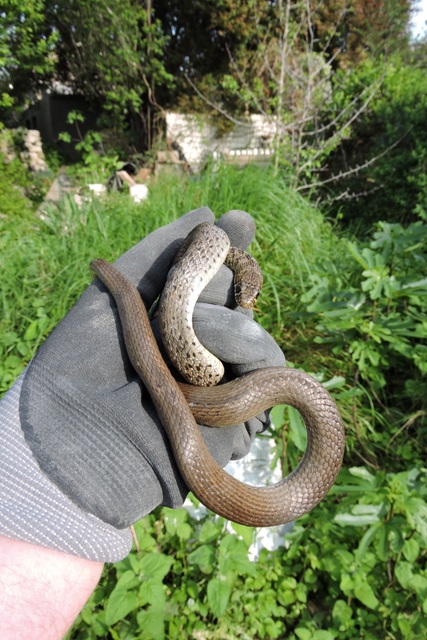
The snake was more than 70 cm long, so was probably an adult male. Females are smaller and thinner. This specimen appeared quite well fed and may well have been looking for a mate.
Females lay a brood of six to ten eggs in the middle of summer.
As I released it into some long grass, it quickly slithered away out of sight.
All snakes are absolutely protected in Croatia. NCG